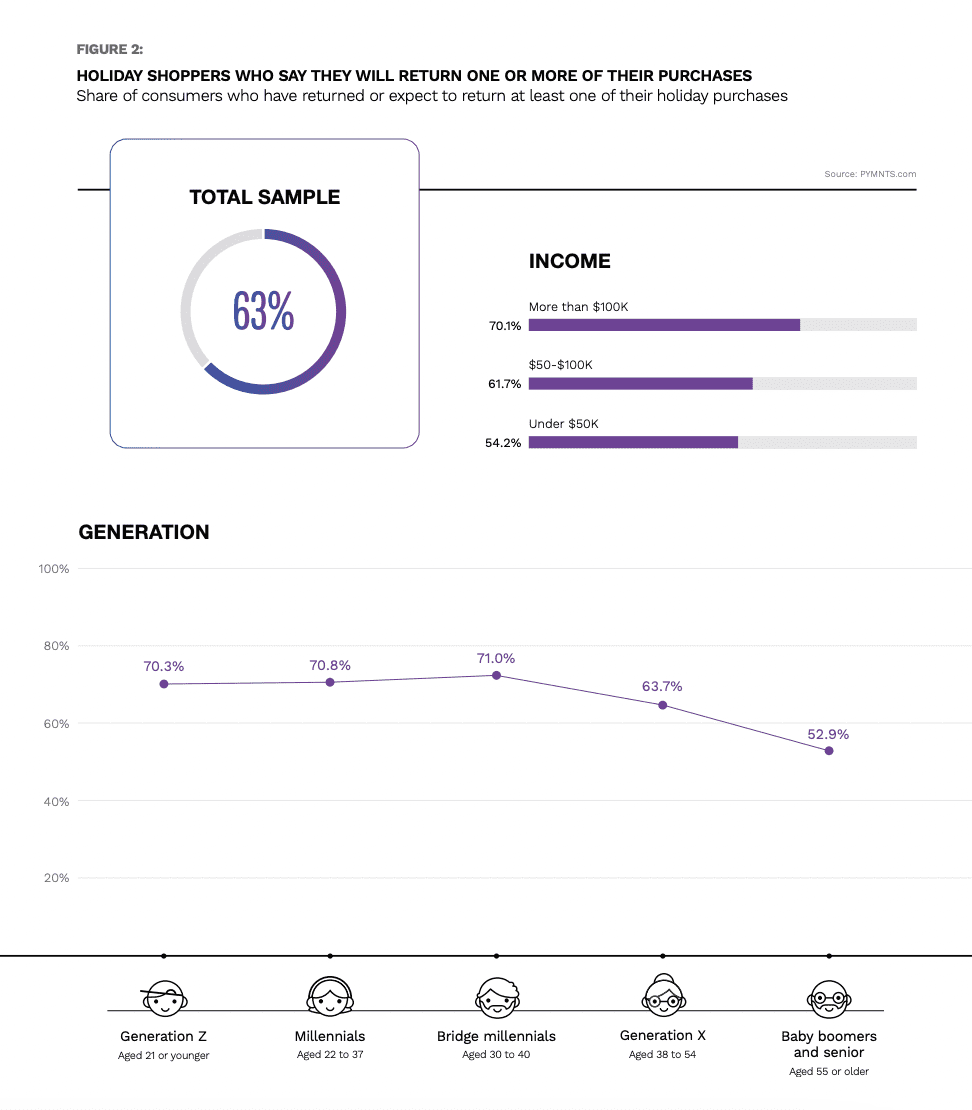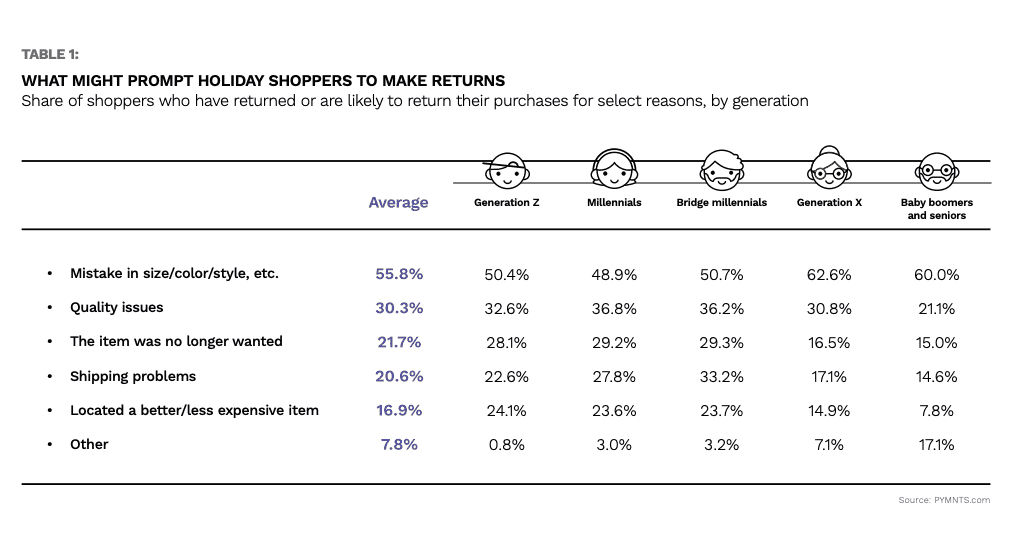Why Retailers Should Pay Consumers to Keep Their Holiday Returns

The average return costs retailers two-thirds of the original price (ouch!). This is because of factors like labor, transportation and warehouse expenses – all invisible to the consumer (minus a package’s tracking information, perhaps). The price of this is astronomical: Over $66 billion in product returns will revert into the supply chain.
Giving Discarded Items a Second Life
This statistic is now driving bizarrely fascinating influencer content on social media platforms like TikTok and Instagram, where people open mystery boxes filled with returned items to share what’s inside with a curious virtual audience. The goal for the mystery box opener? Snag a coveted (hopefully designer, or at least hard-to-find or even highly desired) item at a steeply discounted price (and perhaps brag about it later to internet strangers).
Also see: ‘Mystery Box’ Subscriptions Solving Inventory Issues With Curated Box Drop Surprises
“Subscription mystery boxes are a clever solution that solves problems for suppliers by leveraging the exclusive allure of product drops, along with the desire to save on items people want,” PYMNTS wrote last October.
Perhaps watching someone realize in real time that they now own, say, a trendy Balenciaga item when they paid a fraction of the price will continue to prove fascinating to anonymous viewers. In the meantime, brands like Vogue Business have expressed concerns about how the mystery box movement can erode brand perception. Indeed, if someone associates an expensive item with a bargain-basement price, this may soon change what consumers are willing to pay for certain things, and why.
A Solution to the Challenge
Mystery boxes aside, the holiday season is critical for retailers’ bottom lines, and one botched Q4 can prove fatal. Add in labor shortages or reduction of higher-cost employees, and the stakes are high, whether it’s for department stores, resellers or discounters.
One key solution to ensuring sales don’t get undone via consumer returns? Throw money at the problem. Literally. According to PYMNTS 2020 data, retailers may want to consider offering consumers discounts for keeping their items versus sending them back.
Also see: Online Ordering’s Return Round Trip
One in two (51%) of holiday shoppers would be willing to keep the items they seek to return in exchange for a 30% discount. About half – 45% – of holiday shoppers say they would keep an unwanted item for just a 10% discount.
 On that note, consider that most – 63 percent – of shoppers say they’ve either returned or plan to return a holiday purchase. Perhaps one reason is that over half of consumers said they made holiday purchases without stepping foot inside a store, so they didn’t get an adequate chance to see it or try it in person.
On that note, consider that most – 63 percent – of shoppers say they’ve either returned or plan to return a holiday purchase. Perhaps one reason is that over half of consumers said they made holiday purchases without stepping foot inside a store, so they didn’t get an adequate chance to see it or try it in person.
Regardless, these findings shed an interesting light on what consumers want: convenience, aka not having to schlep to the UPS store the week after the holidays to mail something back. And maybe the willingness to repurpose or re-gift something instead of sending it back where it came from — mystery boxes, or otherwise.
Read More: Online Ordering’s Return Round Trip
Listen to Consumers
The most common reason holiday shoppers may choose to return what they bought? The item they purchased was the wrong color, the wrong size or the wrong style. This was true across all consumer age groups – from Generation Z to seniors. Similarly, nearly one in four consumers returned an item because it didn’t arrive on time.
 Issues in quality came in second, with millennials and bridge millennials (those who sit between millennials and Generation X) being the most likely to cite this as a concern.
Issues in quality came in second, with millennials and bridge millennials (those who sit between millennials and Generation X) being the most likely to cite this as a concern.
Call to Action for Retailers
Creative options and workarounds to combat the wave of Black Friday returns are necessary to ensure the purchases consumers make are the purchases they want to keep. The mystery box movement keeps items recirculated in the economy and is perhaps interesting, or at least entertaining, to watch online. What’s notable is that it proves there is high consumer demand for deeply discounted, pre-loved items.
If the cost of doing business doesn’t involve the cost of packing items up and shipping them back to where they came from, the retail industry will thrive versus merely survive during the holiday season — and all seasons.